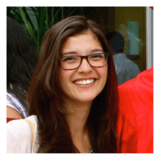Log in or create a free Rosenverse account to watch this video.
Log in Create free account100s of community videos are available to free members. Conference talks are generally available to Gold members.
Summary
As research grows its influence, organizations are increasingly aware that they need a research function. More and more of us are taking on the challenge of establishing a research practice as an organization’s first researcher. It’s a compelling challenge—it’s exciting to create something new without the baggage we’ve been saddled with elsewhere. But organizational change is hard. Among other things, first-researchers have to figure out how, piece by piece, to integrate research workflows into the organization’s current context.
Key Insights
-
•
Establishing research requires diagnosing both explicit and latent demand and the organization's action potential to leverage findings effectively.
-
•
Visual modeling tools like personas, service blueprints, and Wardley maps help build shared understanding and credibility even before conducting detailed studies.
-
•
Building research influence is a gradual, strategic process that depends heavily on developing strong stakeholder relationships and ongoing broadcasting of research impact.
-
•
Inertia and hidden blockers often come from existing power structures and operational roadmaps that resist change even when research reveals clear opportunities.
-
•
Shared understanding across teams is a critical first step and often more valuable at early stages than completed research deliverables.
-
•
Leveraging front-line teams such as sales and customer support provides crucial access to customer insights and can facilitate participant recruitment and organizational buy-in.
-
•
The research skills framework helps identify necessary capabilities and progression for scaling a research practice within an organization.
-
•
Strategy in research involves three core questions: What’s going on? What should we do about it? How do we proceed coherently?
-
•
There is no shortcut to building research influence; most effective approaches find a partner team, deliver value, and then expand influence step-by-step.
-
•
The ability to step back, be self-aware, and honestly assess the organization’s needs and dynamics is essential to shaping effective research strategies.
Notable Quotes
"If research findings aren’t connected to action, then you’re just planning and not actually doing strategy."
"Shared understanding is the first layer of driving impact, not just completing studies or putting personas on walls."
"Visual diagnosis builds credibility and trust before you ever do user interviews or tests."
"You can’t just look at who wants research and what they want it for; you have to peel apart organizational processes to see if action is possible."
"Sometimes hidden blockers come from power structures that prefer things stay the way they are."
"Stakeholder engagement combined with broadcasting research outcomes often marks the turning point from credibility to strategic influence."
"Sales and support teams are closer to ground truth than many might realize and are invaluable partners for researchers."
"Establishing research is years-long work, requiring coordinated action, self-awareness, rigor, and honest assessment."
"If you’re the first researcher, you will often encounter organizational inertia, and the key is to find a partner team and succeed there first."
"Taking a strategic lens means answering: what’s going on here? What do we do about it? And how do we align our actions coherently?"
Or choose a question:
















More Videos

"After the move, our work had more impact, more visibility, and we're present across the entire product life cycle."
Nalini KotamrajuResearch After UX
March 25, 2024

"Constraints can channel focus, but being stuck in them limits potential."
Dean BroadleyNot Black Enough to be White
January 8, 2024

"Racism doesn’t just hurt people like me; you’re hurting yourself by perpetuating beliefs that deny a greater humanity."
Denise Jacobs Nancy Douyon Renee Reid Lisa WelchmanInteractive Keynote: Social Change by Design
January 8, 2024

"Focus groups build empathy by letting team members share their experiences in real time."
Kim Fellman CohenMeasuring the Designer Experience
October 23, 2019

"The most common way people give up their power is by thinking they don’t have any."
George AyeThat Quiet Little Voice: When Design and Ethics Collide
November 16, 2022

"A design system is done not when the style guide is launched, but when it positively impacts customer experience."
Nathan CurtisBeyond the Toolkit: Spreading a System Across People & Products
June 9, 2016

"Compass is a pretty frank place where people feel safe to speak their minds, even at leadership levels."
Greg PetroffThe Compass Mission
March 10, 2021

"Diverse research teams blend outsider and insider perspectives for authentic cultural translation."
Chloe Amos-EdkinsA Cultural Approach: Research in the Context of Glocalisation
March 27, 2023

"The new site had a 19% dropout rate compared to 32% on the old site, showing clear improvement."
Mackenzie Cockram Sara Branco Cunha Ian FranklinIntegrating Qualitative and Quantitative Research from Discovery to Live
December 16, 2022
Latest Books All books
Dig deeper with the Rosenbot
What are common challenges media teams face when trying to implement strategic, service-oriented approaches?
How can teams integrate inclusive design into early product development stages to avoid costly late fixes?
How can understanding financial arrangements improve a service designer’s influence in organizations?
















